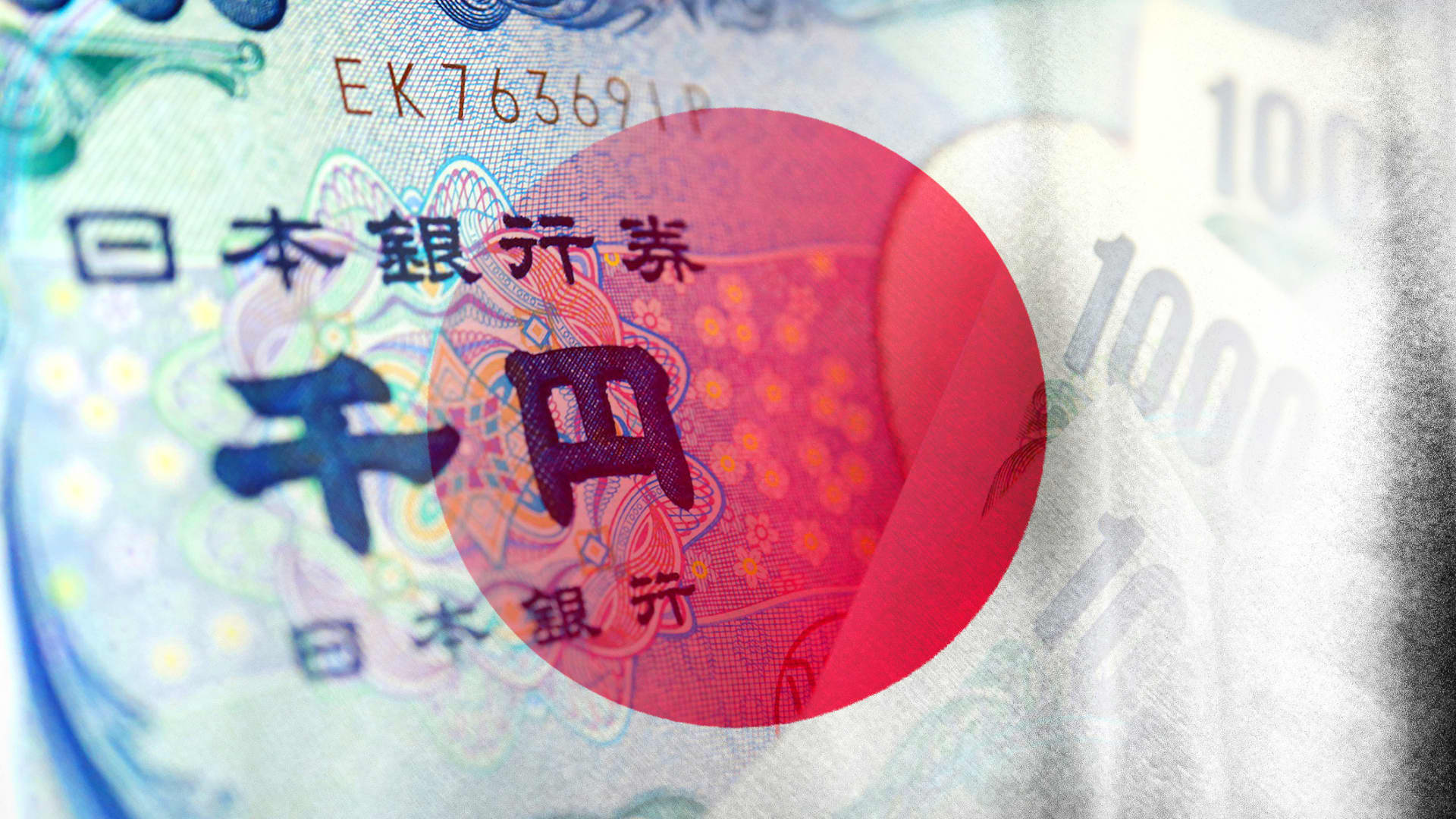One place in the world stands as a beacon for investors in bank stocks: Japan. Japanese banks have outperformed in a year when U.S. banks have come under pressure both from rapidly rising interest rates and the regional banking crisis last spring. While the benchmark Topix stock index — the Japanese equivalent of the S & P 500 — is higher by 22% this year, bank stocks have climbed by 36%, according to a JPMorgan note from earlier this month. By comparison, the Financial Select Sector SPDR Fund (XLF) and the SPDR S & P Regional Banking ETF (KRE) are down by more than 5% and 32% this year, respectively. “We’ve been bullish on Japanese banks for a long time,” said Chen Zhao, chief global strategist at Alpine Macro. Part of what’s driving the bull case for Japanese banks is the country’s yield curve. While the U.S. and other developed economies contend with an inverted yield curve that’s weighing on financial profit margins, Japan continues to have a positive yield curve. A positive yield curve means shorter maturity debt has a lower yield than longer-term instruments, while an inverted curve offers higher short-term rates than long-term debt. In Japan, “the banks are borrowing short and lending long,” Zhao said. “You can have a positively sloped curve; that’s your profits.” Other strategists expect Japanese banks to post further gains even after this year’s rally. JPMorgan’s Marko Kolanovic said earlier this month he recommends an overweight in Japanese financial stocks, saying they have yet to price in the end to negative interest rates that many anticipate will happen next year. In September, Japan’s short-term interest rate was held at -0.1%, while the yield on the Japan 10-Year Treasury was last above 0.87%, up from about 0.41% at the start of this year. “Some market participants are of the view that financial stocks have factored in an end to negative interest rates, whereas we believe it is not yet fully factored in,” Kolanovic wrote in an Oct. 16 note. “We look for an end to negative interest rates in 3Q CY2024, while the market forecasts an end in April or 3Q-4Q next year,” Kolanovic added. “Assuming the above mentioned terminal rates are realized, there is scope for bank earnings to be pushed up to a greater extent than the increases in stock prices to date.” Given this, here is where investors can gain exposure to Japanese banks. The iShares MSCI Japan ETF (EWJ) has a roughly 12% allocation to Japanese financials in its portfolio, making the sector its fourth largest weighting. Some bank stocks it holds include Japan Post Bank and Chiba Bank. EWJ has roughly $12 billion in assets under management, according to FactSet data, and a 0.5% expense ratio. It’s seen fund flows of about $2.6 billion this year, and is up by roughly 7%. The JPMorgan BetaBuilders Japan ETF (BBJP) has roughly $8.7 billion in assets. It also has a roughly 12% allocation to financials. The portfolio includes financials such as Resona Holdings. — CNBC’s Michael Bloom contributed to this report.








